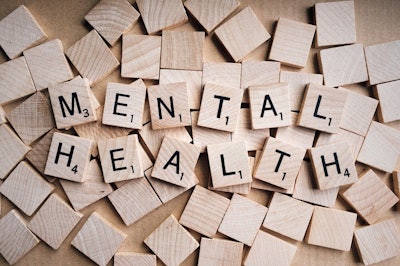
Mental health issues are very much in the news. Intuitively, we know that happy and healthy employees are the foundation of a strong feed or grain business. For a manager looking to improve the workplace, it’s important to have mental health be part of the conversation. The Center for Prevention and Health Services estimates that mental illness and substance abuse issues cost employers between $79 and $105 billion annually in indirect costs. Absenteeism, decreased productivity and increased healthcare expenses are just some of the ways mental health problems cost an employer.
Root causes
In agriculture, as the farm economy has been down, there has been a rise in concern for and resources devoted to farmer mental health. The Ohio Farm Bureau recently launched a campaign titled “Got Your Back,”agri.ohio.gov/wps/portal/gov/oda/gotyourback, to aid those in rural communities suffering from mental illness and stress.
Experts believe that while we are more connected to others via social media, news feeds, e-mail, etc., many people feel further removed or estranged than ever before.
Generationally, the percentage of young Americans experiencing certain types of mental health disorders has risen significantly over the past decade, with no corresponding increase in older adults, according to research published by the American Psychological Association.
“More U.S. adolescents and young adults in the late 2010s, versus the mid-2000s, experienced serious psychological distress, major depression or suicidal thoughts, and more attempted suicide,” says Jean Twenge, Ph.D., professor of psychology at San Diego State University. “These trends are weak or non-existent among adults 26 years and over, suggesting a generational shift in mood disorders instead of an overall increase across all ages.”
As with other topics, managing mental health issues in the workplace may require some different approaches for different age groups. However, all of the topics/suggestions below are generally positive for all age groups!
Promote healthy, safe work practices
Biological and environmental factors impact mental health. Managers may not be able to change the biological factors but can help in the work environment. Ways to assist employees include setting realistic goals and keeping late-night emails and long work weeks to a minimum. There are times of the year (spring planting or fall harvest) when long workdays are needed, but make sure that employees have a chance to catch their breath to prevent burnout.
Another critical area is to review the safety of your facility and ensure that employees are trained and on the lookout for unsafe situations and practices. Attention to this area can reduce employee anxiety. When employees know that others in the workplace value safety and follow appropriate safety measures as part of company culture, they have less to worry about and will feel more secure.
Encourage positive relationships
员工的主管举行重大的影响e on their employee’s work life and are a critical component to employee satisfaction at work. When the relationship is positive, a company thrives. When the relationship fades, employees can experience stress and anxiety —negatively impacting them and likely their performance. Spend time with supervisors to ensure they are developing into supportive, competent leaders. When employees trust their leadership, they are more likely to share when problems arise both internally and externally.
Stress the importance of the connections people have with others. People need to connect to other people at work so that if or when they are struggling, they have someone they can share with and reach out to for general support. These connections can help employees make it through tough times and can also build their resilience.
Provide mental health resources
One of the real challenges in promoting employee mental health is that it looks very different in each person. The employee who smiles the most might be the one who is silently battling difficult times. Managers cannot expect to be mindreaders or mental health professionals — but they can make your employees aware of resources that are available to them. Check the company’s health insurance plan to know what coverage it offers and have that information ready for employees. Many state universities with colleges of agriculture have extension programs assisting with ag/rural mental health specifically.
Inspire physical wellness
一个人的身体健康直接影响他们mental health. Employees will spend half of their waking hours on workdays at your business, so encouraging healthy living in the work setting is invaluable. Some ideas include hosting periodic fitness challenges, providing nutritious snacks, or negotiating a corporate discount at a local gym. In this way, your workplace can help to assist your employees in developing good habits.
Promote resilience
Life-changing events, like the death of a loved one, job loss, divorce, or a serious illness, can happen to anyone at anytime.
So how to adapt and move on? The American Psychological Association (APA) suggests building resilience. Resilience is the process of adapting well in the face of adversity — or “bouncing back” from painful experiences.
You may find these recommendations to be good ones to share with employees dealing with tough times. Here are 10 ways to build resilience:
- Make connections: Good relations with family or friends can provide help and support in times of need.
- Avoid seeing crises as insurmountable problems: Some events are out of our control, but an individual can change how they interpret and respond to them.
- Accept that change is a part of living: Change is a constant for all of us, accepting circumstances that cannot be changed can help an employee focus on things they can alter.
- Move toward goals: Develop realistic goals and do something regularly that enables movement towards these goals.
- Take decisive actions: Rather than detaching completely from problems and stresses and wishing they would go away, take action.
- Look for opportunities for self-discovery: People often learn something about themselves and may find they have grown emotionally as a result of difficult events. Be open to these changes and understand that they take time.
- Nurture a positive view of yourself: A person developing confidence in their ability to solve problems and trusting their instincts helps build resilience.
- Keep things in perspective: When faced with painful events, try to consider the situation in a broader context and keep a long-term perspective.
- Take care of yourself: Engage in activities that are relaxing and enjoyable. Pay attention to needs and feelings and exercise regularly.
- Additional ways of strengthening resilience may be helpful: Some people like to write or journal. Others find meditation, spiritual practices or yoga helps build connections and restore hope.
Prevent workplace violence
我们希望讨论的一些策略帮助employees overcome stressful situations and appropriately deal with their challenges so that they do not spill over into issues of conflict or violence. Several strategies can be used to reduce the chance of workplace violence. Unfortunately, workplace violence incidents are more prevalent today
than ever.
The Alice Training Institute began as a small school security training company and has evolved to promoting strategies to improve the chances of survival during an active shooter event. Several of the policies they endorse are worth implementing.
The Alice Training Institute suggests creating a policy that prevents harassment and distributing this policy so that every employee understands it.
Harassment policies are an essential part of preventing workplace violence, allowing companies to handle complaints with a set of procedures that helps address them quickly and privately. Additionally, they strongly suggest establishing
a “zero-tolerance” code of conduct.
Companies should not tolerate signs of or actual harassment and danger, showing its commitment to preventing violence. It also means communicating what qualifies as unacceptable behavior and the consequences employees will face from committing violent, threatening acts.
An additional strategy includes leadership demonstrating respect in the workplace and showing employees that they value them. Being fair and respectful to all employees shows that respectful treatment is given and thus expected in return. Concurrent with this strategy is encouraging employees to accept individual differences. Encourage employees to get to know each other and recognize an individual’s strengths and weaknesses.
Helping employees
Mental health is as important as physical health, and as we have outlined — challenges in this area can certainly impact a grain or feed business. The good news is that there are lots of resources available. The hurdle becomes one of knowing when to act and helping employees deal with some of the issues. Add them to the list of responsibilities of “being the boss,” we are sure you are up to it. ■
Dr. Christine Wilson is Associate Dean, College of Agriculture, Purdue University West Lafayette, IN.
Dr. John Foltz is Chair, Department of Animal Sciences, The Ohio State University, Columbus, OH, and Dean Emeritus, College of Agricultural and Life Sciences and Professor Emeritus, University of Idaho, Moscow, ID.





















